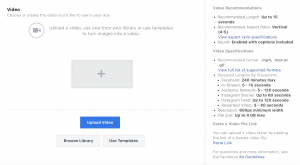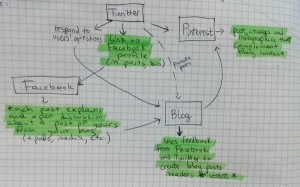
A strong B2B website increases the visibility of your brand and attracts your ideal target market.
Once you have driven the right traffic to your website, it’s time to focus on converting those visitors into leads. In this blog, we are going to show you how to create great CTAs to convert website visitors into leads.
Clear & Direct
Calls-to-action (CTAs) should first and foremost be clear and direct. Don’t mince words in your CTAs and don’t overthink it. Be upfront and direct. There shouldn’t be any confusion about what your website visitor should do. When drafting CTAs, get feedback from others in your department, the sales team, or customer service. In some cases, they can help you pare down language so it’s even more direct.
Here are examples of clear, direct CTAs:
LEARN MORE
CONTACT
REQUEST QUOTE
GET PRICING
CLICK HERE
All these CTAs are short and state an action the website visitor should take. If you find yourself stuck, read the CTA options aloud to see where you can edit them down.
Find out how to capture website leads using these three easy methods.
Timely
There is a great analogy for conversion and lead generation. Great marketing is like dating. You don’t ask someone to marry you on the first date. That would be way too forward, off-putting, and a little scary. Well-crafted marketing strategies, like a website, build a relationship with a potential client that earns their trust and affinity. This analogy is particularly true for B2B website CTAs—they must be timely and not over-eager.
For example, while it’s OK to include Contact CTAs on your homepage, you want to include other well-timed CTAs that will build trust with your website visitor and let them get to know more about you. You don’t want to put a CTA reading BUY NOW at the end of a blog, but you do want to include a CTA to learn about your services, view other articles, or even download helpful digital guides.
The right CTA at the right time can be the key to establishing a strong, lasting relationship with your prospect.
Needs-Based
As a marketer, you want your website visitor to perform a particular action, but that’s a little selfish, isn’t it? What about the visitor and their needs? Don’t laugh, we are serious. Effective calls-to-action on B2B websites should also include needs-based directives. This requires a minor shift in mindset from “what do I want my website visitors to do?” to a new mindset of “what is in it for my visitor?”
Instead of DOWNLOAD OUR PRICING, consider something like SEE PRICING OPTIONS. Rather than READ BLOG about a blog covering 4 Tips on Marketing, try something from your B2B website visitor’s perspective, such as GET 4 TIPS. By switching the perspective from you to them, you make it a more personal experience. When website visitors feel that you understand their needs and are speaking their language, they are more likely to convert.
Is your website generating leads or duds? Learn more.
Unique
Placing a CONTACT US button on a website is a fairly standard practice. It’s clear, direct and simple. However, it’s OK to also get creative and focus on including unique CTAs in your B2B web design as well. Try out different variations on CTAs to see what your website visitors find more compelling.
For example, rather than VIEW PORTFOLIO, try out something different, like SEE THE DIFFERENCE or WATCH THE TRANSFORMATION. In a similar vein, rather than asking existing clients to UPGRADE SERVICES, try out a directive that will get their attention, such as TAKE IT TO THE NEXT LEVEL or LEVEL UP.
Remember that your website visitors are likely looking at the websites of your competitors as well, so don’t be afraid to try out new CTAs that aren’t like everyone else’s. The only warning here is not to get too cutesy or creative. Your CTAs should still be direct and easy-to-understand, not confusing or unclear.
Conclusion: Compel Action
It’s easy to stick with standard CTAs, but we suggest shaking it up a bit. Focus on creating CTAs that compel action, that entice website visitors to do something. Even if your website visitors aren’t reading every word on a page, they are likely reading your CTAs – make them count.
Digital & Social Articles on Business 2 Community(76)
Report Post








